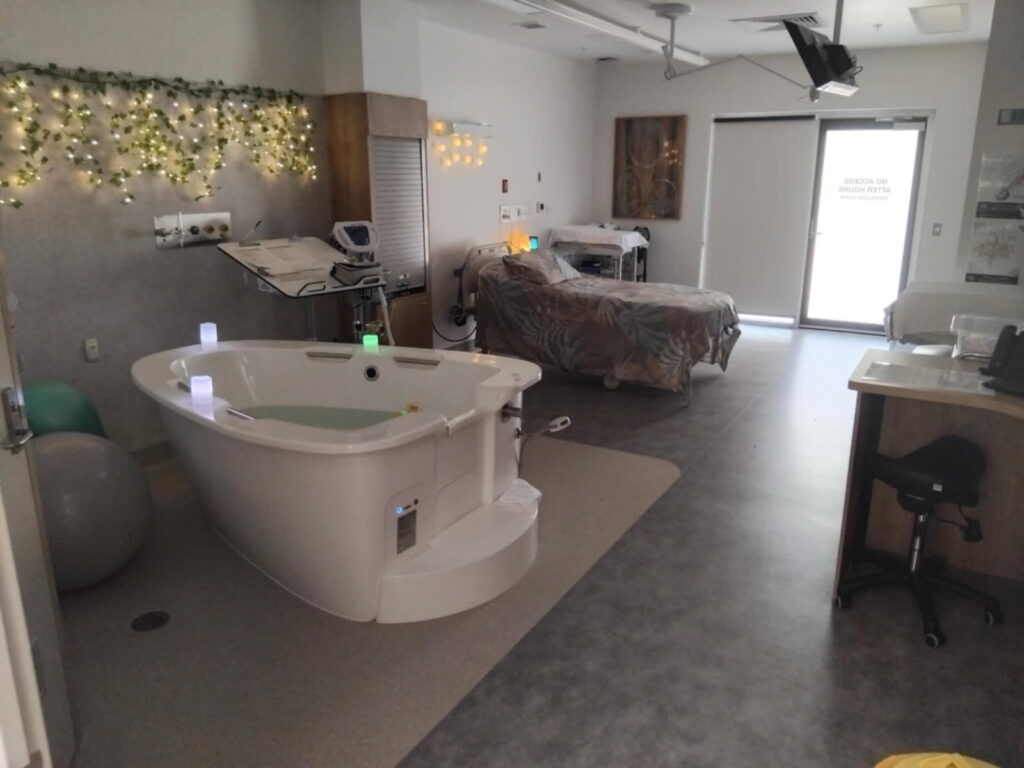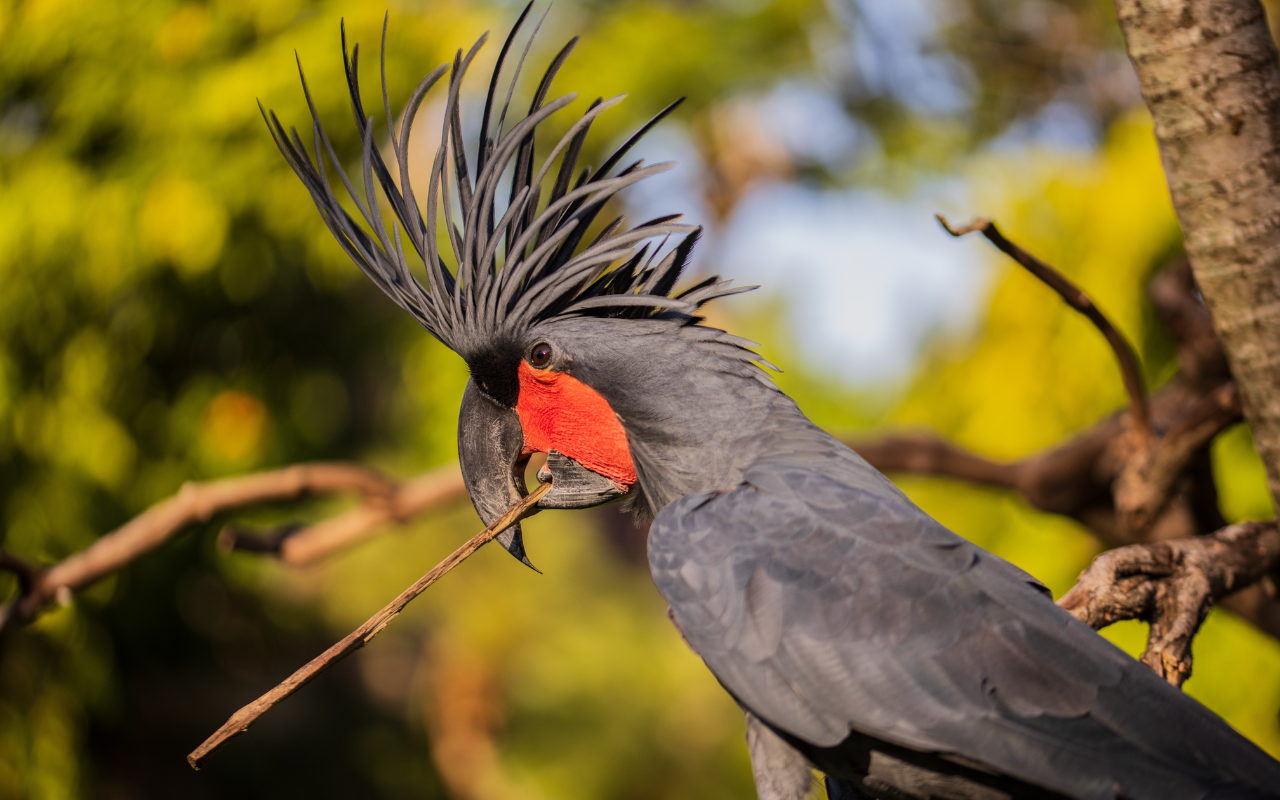The Palm Cockatoo Midwifery Group Practice (MGP) at Weipa Hospital, Cape York Peninsula, has assisted local women to give birth locally rather than travelling 800 km to Cairns. The group wants to make a culturally safe space so that more Aboriginal and Torres Strait Islander women can give birth in the Western Cape.
Christine Young is a small woman with pink hair, colourful glasses and a quiet voice. At the inaugural Western CapeHER women’s health forum this month, she gently tapped a stick on the lectern to mimic how the male Palm Cockatoo attracts a mate for life, building a safe nest to hatch a family.
The Palm Cockatoo MGP, a team of six clinical midwives and a Midwifery Unit Manager, is celebrating one year of birthing babies in Weipa, Aurukun, Mapoon and Napranum.
This year, 24 babies have been born at the new facilities, and approximately 150 women have visited the service. The Western Cape region sees around 120 births per year.
Around 20% of the women birthing at the MGP in the last year were Aboriginal or Torres Strait Islander. Ms Young says the hospital will be attempting this year to increase the number of Indigenous women who feel safe to birth at the hospital.
“Twenty-five years ago, women could birth here in Weipa,” said Ms Young.
The traditional owners of the land at Weipa include the Anathangayth, Alngith, Peppan, Thanakwithi and Wathyn peoples.

A long time without local birthing
Birthing was last available at Weipa hospital in 1999. In the interim, Queensland Health has flown pregnant people to Cairns hospital at 36 weeks, a journey of 800 km to ensure the best health care available. Birthing locally ensures the best medical care as well as the safety of community.
Ms Young says creating a welcoming space, and a culturally safe space tailored to the needs of Aboriginal and Torres Strait Islander women, helps women to not only give birth but become confident mothers.
“Having a known midwife helps. Getting education, having your education tailored to your needs, and having a relationship with someone — hopefully, that you trust — is quite a long space of time, it builds trust that everything’s going to be alright. And that this is a normal process and you can do it,” said Ms Young.
A safe first 2000 days
Weipa Midwifery Director Michelle O’Connor says that the birthing suites are an important change a long time in the making.
“Having a baby close to your home and family support comes with obvious benefits,” said Ms O’Connor.
“For First Nations women and families, there’s also the spiritual connection to the land on which you’re born. And there’s all sorts of health reasons and spiritual, holistic benefits to having a connection to Country, but birthing close to family on Country is associated with health benefits for women and families, particularly our First Nations communities,” she said.
“We work hard to provide that multidisciplinary care. We like to call it relationship-based care. The best care is when the doctors and the midwives work well together. We’ve got that great dynamic here at Weipa Hospital,” she said.
“To fracture that relationship is far from ideal. We want as many women as possible to be close to home, their families, and with their trusted midwife and doctor,” she said.
Ms O’Connor said it was a big undertaking to create the infrastructure and attract the general practitioner obstetricians (GPOs), GP obstetricians and midwives, senior staff and nurses to the hospital.
“It took us five years. We have a water birth area, and a beautiful outside area for families to be there to support women,” she said.
Ms O’Connor says that birthing also has a much wider positive effect on the community.
“When you have a hospital that births, it has a positive impact on other services. But it also brings people to the community. Birthing is often referred to as the heart and soul of the community.
“They say that if we get the first 2000 days of life right, we’ve built good health for the last 2000 days of life,” said Ms O’Connor.
“Twenty-five years is a long time to go without a birthing service. It’s incumbent on us as a health service to work towards getting that trust again in the community. That’s happening. You can see it happening,” she said.
“We’re hoping that over half of the women who give birth in the Western Cape per year — so, about 60 women — will birth in Weipa,” she said.
Gold standard midwifery
The MGP offers pregnant people long term relationships with physiotherapists, social workers, Advanced Health and Indigenous Health workers, mental health workers and perinatal mental health workers.
At Weipa hospital, the team is available to the pregnant person and baby for up to 2 years after birth. The team is supported by a separate team of doctors including GPOs and obstetrics medicine specialists, who specialise in conditions including endocrine issues.
The teams have close communication within the hospital, including weekly case conferences, and organise care around the gold standard for midwifery laid out by the Nursing and Midwifery Board of Australia (NMBA).
The midwifery gold standard approach prioritises a continuity-based, midwife-led care model that idealises connection to a small, consistent caregiving team, is evidence backed for the best possible maternal and neonatal outcomes, centres trusted and long term relationships, and benefits both midwives and families.
The teams work with women and pregnant people to determine the health and safety risks of each pregnancy according to the Australian Midwifery Guidelines.
Although equipped for all emergencies, the MGP currently takes in pregnancies that are agreed to be low to medium risk. Those women with pregnancies that might be higher risk are flown to Cairns hospital at 36 weeks.
Cultural safety and co-design essential
The data continues to show that culturally safe birthing practices, on Country, are essential for Aboriginal and Torres Strait Islander peoples. Progress in improving cultural safety, including services being funded and run by Aboriginal Community Controlled Organisations, has been traditionally slow.
”Inequities experienced by First Nations women and newborns are impacted by colonisation,” wrote Pamela (Res) McCalman (Noongar), in a study published in the Lowitja Journal last year.
“As a redress, government health policies recommend the implementation of evidence-based, co-designed models of care.”
A 2025 systematic scoping review by Sivertsen and colleagues, in Frontiers in Public Health regarding the birthing experiences in mainstream maternity hospitals in Australia, Aotearoa, Canada, the US, Kalaallit Nunaat (Greenland) and Sápmi (part of the Scandinavian Peninsula and the Kola Peninsula; including Sweden, Norway, Finland and Russia), found that the medicalisation and evacuation of Indigenous women for childbirth cause cultural, geographic and social disconnection, despite infant safety benefits.
“It underscores the need for better cultural safety education, communication and the inclusion of cultural practices in care, with support from Indigenous birth support workers being essential,” wrote the researchers.
Ms Young said the Palm Cockatoo MGP had an active Mother’s Day this year.
“We had a Napranum woman have a baby, which was exciting. That was on Mother’s Day, at six minutes past midnight. I still would like to find out if she was the first mum in Queensland on Mother’s Day,” said Ms Young.
Subscribe to the free InSight+ weekly newsletter here. It is available to all readers, not just registered medical practitioners.

 more_vert
more_vert
This is a great model of care BUT 24 births a year (if I am reading this correctly) between 6 midwives and their supporting doctors is not a lot to maintain clinical competence. I hope (a) numbers build up (b) there are arrangements in place for rotation to a busier unit, refresher training etc to keep up skills. Even with the most apparently low risk pregnancies things can go wrong.
From the safety point of view, women feeling comfortable to plan to give birth in Weipa should encourage them to present early , not wait at home as long as possible, risking unplanned home / side of the road births. (or on the RFDS plane)
This is a fabulous model of care, where collaboration with continuity midwives, local allied health clinicians and local doctors provide safe care close to home.
This is the model we should be supporting throughout rural Australia. Unfortunately some sites are pushing to proceed without doctors trained in obstetric emergencies.